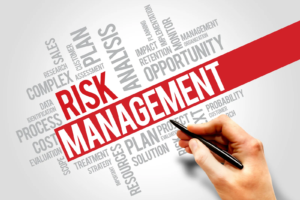Crafting a clear and comprehensive technology roadmap is no longer optional—it’s a necessity for any business looking to compete and thrive in today’s tech-driven world. Businesses, regardless of size or industry, are increasingly dependent on digital tools, data systems, and automation. Yet, many organizations jump into adopting technologies without a cohesive plan, leading to misalignment, wasted resources, and stalled growth. A technology roadmap acts as a strategic guide, aligning your tech investments with your business goals, ensuring every step taken contributes to long-term success.
It also provides clarity to your team, reduces reactive decisions, and highlights areas needing innovation or upgrades. Most importantly, it allows decision-makers to prioritize resources, eliminate silos, and stay competitive. Whether you’re launching a new product, upgrading your infrastructure, or scaling operations, a well-designed technology roadmap helps steer the organization through digital complexity toward sustainable growth and innovation.
What is a Technology Roadmap?
A technology roadmap is a high-level visual plan that outlines an organization’s technology initiatives, objectives, and development timelines. It brings structure to the innovation process by identifying current capabilities, future technology needs, and the strategic steps necessary to bridge the two. More than a technical document, it is a strategic tool that aligns IT projects with business objectives, ensuring all technological efforts serve the bigger picture.
There are typically three core elements within a technology roadmap:
- Goals – Clearly defined business or operational objectives.
- Technological initiatives – Projects or systems required to meet these goals.
- Timeline – Milestones that define the sequence and timing of initiatives.
When developed collaboratively across departments, a roadmap keeps the entire organization moving in the same direction and prevents miscommunications or redundancy in digital initiatives.
Aligning Technology with Business Strategy
One of the most crucial roles of a technology roadmap is to ensure alignment between your technological developments and overarching business strategy. Without this alignment, tech investments often end up as isolated experiments that don’t contribute measurable value.
For example, implementing an AI chatbot might seem like a cutting-edge decision. However, if your core objective is improving customer retention through personalized service, that same chatbot must be part of a broader CRM overhaul, not just a standalone tool. A roadmap identifies such relationships and ensures every new solution or upgrade supports the end goals of the business.
Moreover, by aligning technology with strategy, your team stays focused. It helps department heads say no to shiny distractions and yes to innovations that move the needle.
Enhancing Operational Efficiency and Productivity
Without a roadmap, IT decisions often become reactive rather than proactive. Businesses may find themselves purchasing tools that don’t integrate well, hiring IT support too late, or failing to train teams effectively. This fragmented approach can slow down operations and lower overall productivity.
A technology roadmap identifies where the bottlenecks lie and maps out solutions, upgrades, or system integrations that eliminate inefficiencies. When departments are equipped with the right tools that work seamlessly together, tasks are completed faster, errors decrease, and employee satisfaction improves.
For instance, if your customer service team uses five different systems to handle queries, a roadmap might highlight the need for an integrated helpdesk platform as a priority. It becomes easier to justify the investment, knowing it fits within the long-term tech evolution of your business.
Supporting Scalable Growth and Future-Proofing
Scalability is a major concern for growing businesses. The tools you use today may not serve your needs tomorrow. That’s where a technology roadmap steps in. It allows you to anticipate growth stages and plan accordingly—whether that means investing in cloud infrastructure, upgrading cybersecurity measures, or adopting modular software that can expand with your operations.
Without this foresight, businesses often outgrow their systems or need costly overhauls just a few years down the line. Future-proofing with a roadmap ensures that today’s investments are flexible and sustainable, avoiding technical debt and reducing future risks.
It also opens doors to emerging tech trends. With a roadmap, your organization is not just reacting to changes in the industry—it’s preparing for them. Whether it’s automation, AI, or data analytics, these technologies are more beneficial when adopted as part of a well-planned strategy rather than in isolation.
Enabling Clearer Decision-Making Across Departments
A common challenge in many businesses is that IT and non-technical departments often operate in silos. Marketing may implement their own tools, while operations build different systems, and IT ends up scrambling to make everything work together. A roadmap centralizes this decision-making.
By involving multiple stakeholders in the roadmap creation process, all departments gain visibility into tech plans and timelines. It encourages collaboration, reduces duplicated efforts, and improves budget management. Everyone understands what’s coming next, what’s needed from them, and how the technology will impact their role.
Moreover, this transparency builds accountability. If sales is aware that CRM upgrades are six months out, they can plan campaigns accordingly. If finance knows what software is being retired, they can allocate resources to new subscriptions.
Reducing Costs and Avoiding Wasted Resources
Unplanned technology investments often lead to overlapping tools, underutilized platforms, and poorly implemented systems. This can waste thousands—if not millions—over time. A technology roadmap provides visibility into what’s already in place and what is truly needed, helping businesses avoid unnecessary spending.
It also helps with vendor management. Knowing your timelines and needs allows you to negotiate better contracts, avoid last-minute purchases, and evaluate alternatives with a clear view of how they fit into the larger picture.
When budgeting for technology, a roadmap ensures that investments are made with purpose. It replaces guesswork with structured planning, which minimizes risks and avoids costly errors in deployment or integration.
Real-World Relevance for Small Businesses and Enterprises Alike
While many associate roadmaps with large corporations, small businesses arguably benefit even more from them. With fewer resources and less margin for error, small companies need their tech decisions to count. A roadmap gives structure to that decision-making.
Let’s say you’re a local iphone repair store in Aventura, FL, looking to modernize operations. A roadmap could help identify digital POS systems, online appointment tools, and customer feedback platforms that enhance service and increase profitability. With proper planning, these systems can be integrated smoothly, with future upgrades anticipated ahead of time.
Likewise, a mid-sized company offering business management services in Miami can use a roadmap to plan digital transformations, evaluate AI tools for customer experience, or adopt ERP systems that support expansion without chaos.
Driving Innovation with a Strategic Framework
Innovation thrives in a structured environment. While it may seem counterintuitive, having a roadmap can accelerate innovation by giving your teams the space to test new ideas without derailing core operations.
Instead of ad-hoc experimentation, businesses can plan innovation sprints, allocate resources for research and testing, and roll out MVPs (Minimum Viable Products) in a controlled, measurable way. This ensures innovation aligns with long-term goals and provides actual ROI.
Importantly, a roadmap encourages a culture of continuous improvement. It signals to the team that innovation isn’t just allowed—it’s expected and strategically guided. This boosts morale, enhances creativity, and positions the business as a leader in its niche.
In the middle of this transformative approach lies the validation of your ideas ensuring Success in business and entrepreneurship, which is essential to avoid blindly following trends. By validating technological initiatives within a roadmap, you confirm their relevance and potential impact before making major commitments.
Improving Customer Experience with Technology
Today’s customers expect speed, convenience, and personalization—all driven by technology. A roadmap ensures your digital customer experience is not left to chance. It allows businesses to prioritize customer-centric tools like mobile apps, automated support, chatbots, and loyalty platforms.
When implemented as part of a roadmap, these tools work together, creating a seamless experience for users. You can identify which systems need to integrate, which platforms should collect user data, and how to personalize interactions based on that data.
Over time, this structured approach turns into a major competitive advantage. Businesses that continuously improve their customer experience through planned technology upgrades consistently outperform those that adopt systems haphazardly.
Building a Resilient IT Infrastructure
Cybersecurity threats, system outages, and data loss are real risks that can cripple a business. A technology roadmap doesn’t just plan for innovation—it plans for resilience. By evaluating your IT infrastructure regularly and planning proactive upgrades, you reduce vulnerabilities.
You can also plan backup systems, staff training, data recovery protocols, and compliance measures as part of your roadmap. This builds a stable digital foundation for all departments to rely on.
For instance, if your servers can’t handle a surge in traffic during a product launch, the consequences could be severe. A roadmap identifies those weak points early and helps prevent disasters before they happen.`
How to Create an Effective Technology Roadmap
Crafting a powerful technology roadmap requires clarity, collaboration, and commitment. Here’s a simplified breakdown:
- Assess Your Current State – What tools, systems, and platforms are currently in use?
- Define Your Goals – What are the business objectives over the next 1–3 years?
- Identify Gaps and Needs – What technologies or processes need upgrading?
- Prioritize Initiatives – Which projects are most urgent or impactful?
- Set a Timeline – Create realistic timelines with milestones and checkpoints.
- Engage Stakeholders – Include input from all relevant departments.
- Review Regularly – A roadmap is a living document. Update it as your business evolves.
Conclusion: Future-Proof Your Business Today
A technology roadmap is not just a tool—it’s a strategic asset that keeps your business focused, agile, and ready for growth. From improving operational efficiency to enhancing customer experience, validating innovations, and supporting scalable expansion, the benefits are undeniable. Whether you’re a startup or an enterprise, having a clear tech vision helps you stay ahead in a rapidly evolving landscape. The future belongs to businesses that plan their digital journey thoughtfully. Start building your roadmap now—and let it guide you toward smarter decisions, stronger systems, and sustainable success.
























4 Comments on "Why Your Business Needs a Technology Roadmap"